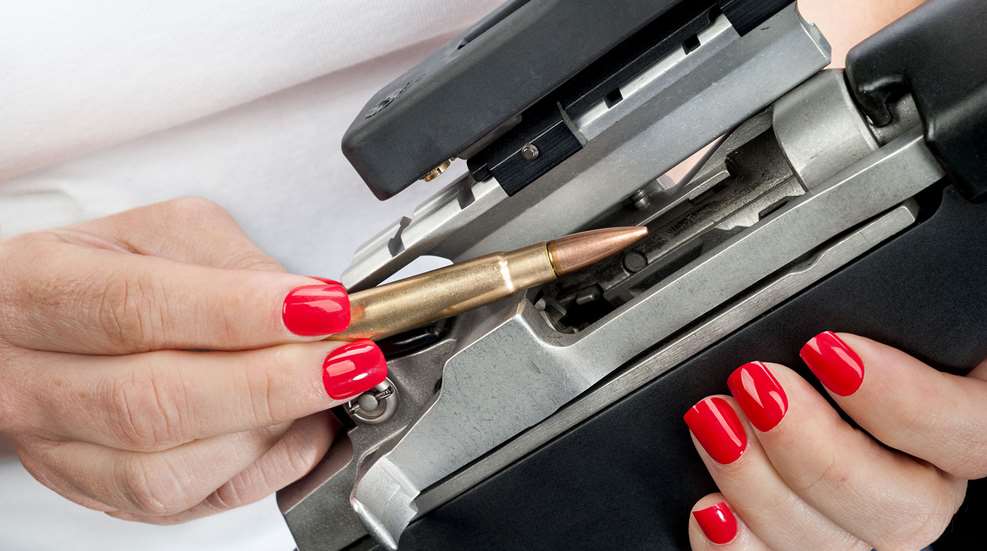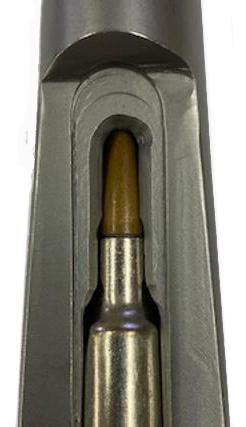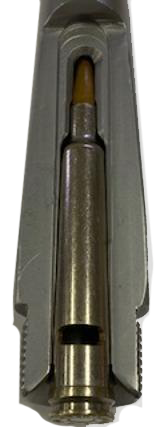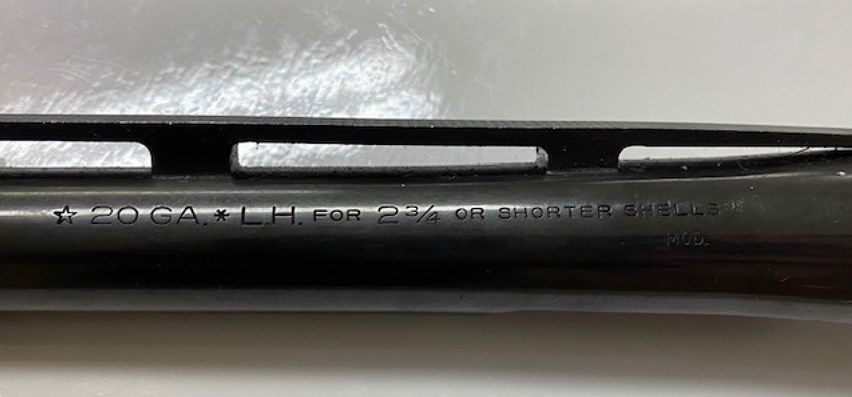Chamber: The Least Understood Part of a Firearm

Chamber: The Least Understood Part of a Firearm – NRA Women.com
The data stamp on a firearm’s barrel is the road map to the chamber
by HEIDI LYN RAO posted on September 14, 2021
If there ever was an “ah-ha” moment when teaching an NRA Firearms Training course, it is when I explain a firearm’s chamber. Most students understand the concept of the chamber, but really do not understand what it actually encompasses. As an instructor of instructors-to-be, it’s my job not only to thoroughly explain what a chamber is, but also to teach my students how explain it to someone else.
A firearm’s chamber is covered in almost all the NRA Firearms Training courses. It is especially important to thoroughly explain a firearm’s chamber when teaching the NRA Basic and Instructor Rifle, Pistol and Shotgun Courses. When I get to the section of the lesson, I ask each student to define the chamber of a firearm. The answers are always the same: “The chamber is the hole that the cartridge goes into before it is fired.” It does not matter if the student is an experienced shooter or beginner, the answer never varies because it was never properly taught to them in terms that they can understand and visualize.

The chamber is more than a cavity where the cartridge is seated. There are some calibers that are so similar in size and manufacturers’ specifications that the wrong cartridge can be fed into the chamber of a different caliber. For example, if you had a rifle chambered for .300 Win Mag, you could actually feed a .300 Wby Mag cartridge into the .300 Win Mag chamber. The result could cause a catastrophic failure, resulting into serious bodily injury or death.
The chamber of a firearm defines that firearm! For example, a Remington Model 700 can come in many different calibers–.30-06 Sprg, .25-06 Rem, .300 Win Mag, 7 mm, etc. How often have you asked someone, “What caliber is your rifle?” What you are actually asking them is, “What is your rifle chambered for?”

In the past, with older cartridges, the firearm’s chamber was a relatively easy concept. Early ammunition was what is referred to as “straight wall” cartridges. Straight wall cartridges were not necked, so there was not a lot of milling of the rifle’s barrel. Many modern cartridges are necked, so the firearm’s chamber must be milled to the correct cartridge specifications to properly contain the pressures. This ensures that the expanding gasses do not blow back at the shooter, and prevents the firearm coming apart in the shooter’s hands.
The milling of the firearm’s chamber is very precise in modern firearms. For example, take a modern rifle cartridge and run your fingernail down the bullet to where it meets the case. Your fingernail should hang-up slightly where the bullet enters the case. If you had a crosscut away of a chamber, you would see that it is milled to the precise difference between the bullet and the thickness of the case. A proper chamber should be milled to fit a cartridge like a glove before it is discharged.

It is very important to only load and fire the caliber designated on the barrel of the firearm. The information on the barrel is called the data stamp. The caliber on the data stamp must match the information on the cartridge exactly. That information tells you for which caliber the gun is chambered.
Shotgun chambers are a little different. The chamber of a shotgun fits the shotgun shell after it is discharged. A shotgun shell is crimped on the end to keep the shot contained within. When the shell is shot, the crimp opens, and the shot is propelled through the barrel by the expanding gases. If the crimp opens and the chamber does not allow for the crimp, the result is an obstruction in the barrel. An obstruction in the barrel can cause a catastrophic firearms failure that can lead to serious bodily injury or death. This is why you should not shoot a 3″ shotgun shell out of a shotgun that is stamped “2 ¾” only.”

A shotgun shell that indicates it is a 2 ¾” shell or 3″ shell, is only that size after the shell is fired and the crimp has opened.
Remember, only fire shotgun shells that match the data stamp on the barrel. The data stamp on shotgun barrels might indicate “2 ¾” Shells only,” it might indicate 2 ¾” or “3” shells” or even indicate “3 ½” Magnum Shells.” If you had a crosscut away of a shotgun chamber, you would see the chamber is milled to accept the specific size shell once it is fired and the crimp is open.
A shotgun shell that indicates it is a 2 ¾” shell or 3″ shell, is only that size after the shell is fired and the crimp has opened. When crimped (and not yet shot) a 2 ¾” shell does not actually measure 2 ¾”, and a 3″ shell does not actually measure 3 inches. A 2 ¾” shell is approximately 2 ¼” and a 3″ shell is about 2 ¾.” When opened, the crimp is approximately ¼” in length.
As you can see, a firearm’s chamber is more than just a hole in which you stick a cartridge or a shotgun shell. A firearm’s chamber not only contains a cartridge’s pressures to ensure your bullet performs as expected, but it also protects the shooter from injury by directing the gasses forward, as these expanding gasses push the projectile(s) down the barrel and out the muzzle. The data stamp is the road map to the chamber. Follow the written specifications on the barrel and you can eliminate some of the common causes of equipment failure.
